
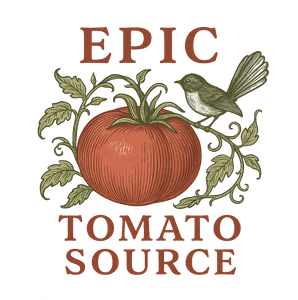
Hokianga Heirloom Tomatoes
Heirloom Tomato Seed Selection
What does Open-pollinated even mean?
In the tomato world — and especially among heirloom growers, seed savers, and food sovereignty advocates — open‑pollinated (OP) seeds are everything. Let's dive.
Is pollinated naturally — by insects, wind, or self-pollination.
It will grow true to type if seeds are saved, meaning the next generation will resemble the parent plant.
It has genetic stability, built over many generations of careful selection by gardeners, farmers, and tinkerers like Radiator Charlie.
This means if you save seeds from an open-pollinated “OP” tomato, such as Giant German, you'll get Giant German again next year.
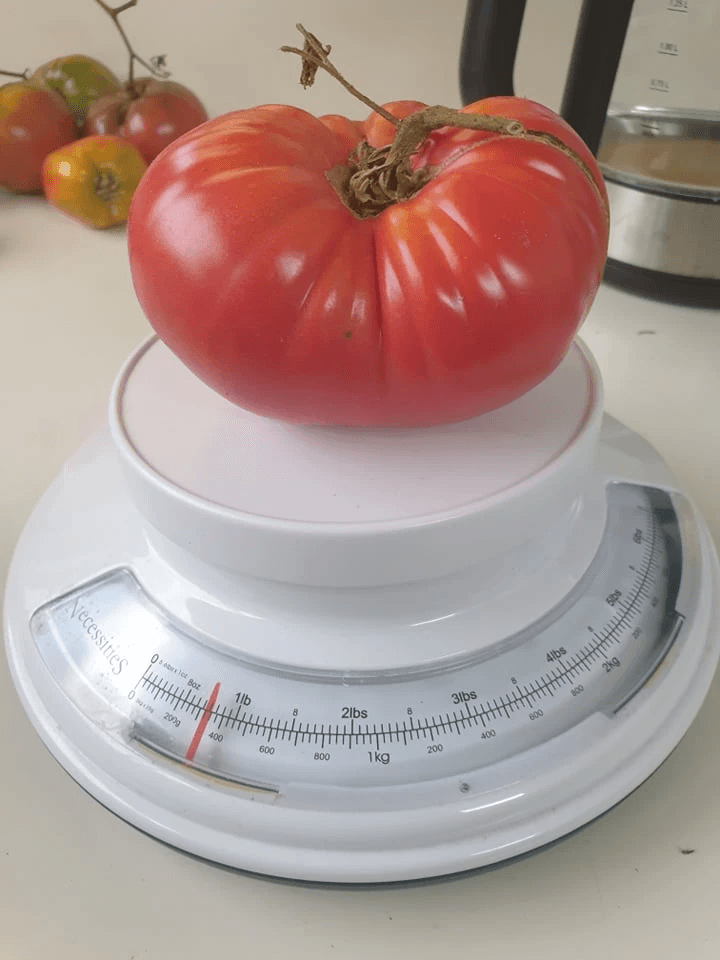
The Giant German heirloom beefsteak pictured above is a stunner — much like the Polish variety Soldacki, which hails from Krakow, Poland.
In Contrast: Hybrid (F1) Seeds
Let’s Talk About Hybrids
(F1 Tomatoes)
Hybrid (or F1) tomato seeds are created by crossing two different parent varieties. It’s a bit like matchmaking in the garden — you take the best of two tomatoes and combine their strengths in one child.
The result? Often, a plant that’s super vigorous, uniform, and possibly resistant to common diseases. That’s called hybrid vigour, and yes, it’s a real thing.
The “F” in F1 stands for “filial”, which means “offspring” — so F1 is the first-generation child of two different parents. If you save seeds from those, you get F2S (the second generation), and that’s where the wild cards begin to show up.
But here’s the catch: you can’t reliably save seed from F1 hybrids. The next generation — called the F2S — tends to throw back to all sorts of traits from their grandparents. It’s like opening a box of tomato-shaped surprises. Fun if you’re into experimentation, but unpredictable if you’re after consistency.
Also worth knowing: The seed companies that produce hybrids generally keep the parent lines secretive. They don’t tell you who the proud parents are, so you can’t easily recreate the same cross at home. You then have to buy new seed each year from the supplier if you want the same result.
Still, if you’re curious, you can grow seeds from an F1 tomato to see what pops up. Some people have a great time selecting new lines that way — it’s slow, but kind of magical.
I’ve even been thinking about trying my own cross — maybe Soldacki × Moneymaker, just for fun. It’d take a whole year to see what came of it, but I could create a one-off gem and tell you all exactly what the cross was — especially for the tomato-obsessed among us.
Just to be clear, this is not genetic modification. There’s no gene splicing, no microscopes, no jellyfish DNA. Hybridising is just cross-pollination — the same kind of thing bees do naturally. You're just playing matchmaker with a bit more intention.
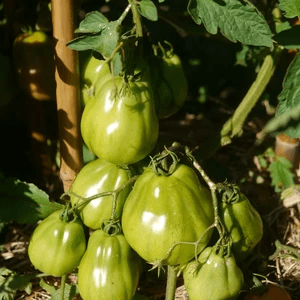
The heirloom tomato in the image above is one I grew in my garden last year. It was meant to be Tlacoula — but its shape turned out quite different, more like a pear. It could be a hybrid. The ripples resembled Tlacoula, but that pear-like form isn’t a known trait of the variety.
Whatever it was, it thrived — a heavy cropper, handled the drought beautifully, and didn’t split, behaving just like Tlacoula. With its firm texture and bright, zesty flavour, it would make an incredible tomato salsa.
Mum later told me that Dad had been helping himself to the mystery tomato from my garden — he said it tasted the best and was having it sliced on his Vogel's for his breakfast.
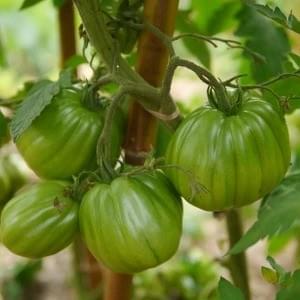
Now, the image above is Tlacoula — and you can see the similarities in the ribbing. But the shapes are different. I’m a little excited about this mystery tomato… I won’t be able to give you a verdict until I see the fruit from the pear-shaped one this season, but I’ll keep you posted!
Why Open-Pollinated Matters Specifically for Tomatoes
Tomatoes are largely self-pollinating, meaning they have both male and female parts within the same flower and can fertilise themselves without needing pollen from another plant.
Each tomato flower contains:
Stamens (male parts) that produce pollen.
Pistil (female part), specifically the stigma at the tip, which receives the pollen.
In most tomato varieties, the stamens form a cone around the pistil, making pollen transfer very efficient within a single flower.
How pollination happens:
In nature, wind, vibration, or insect movement (like bees buzzing) shakes the flower, causing pollen to fall from the stamens onto the stigma.
Even a gentle breeze or the plant moving slightly is often enough.
Bumblebees are especially effective because they "buzz pollinate" — they vibrate their wings at the perfect frequency to shake the pollen loose.
This means most open-pollinated tomatoes will:
- Stay true in home gardens
- Let you save, share seed
OP seeds give you freedom — not just to save seeds, but to choose wisely from varieties with proven traits. With such a wide selection available, you can grow what thrives best in your climate.
- The more varieties you try, the more likely you are to find tomatoes that love your local environment
- This is why growing tomatoes can feel so personal.
Cold-hardy types for short-season zones, humid-tolerant ones for muggy zones. There's no need to gamble on a variety that struggles where you are — the strength of open-pollinated seed is that someone, somewhere already selected for success.
Take advantage of the years of informed, intentional selection from a vast lineage of tomatoes, each one with traits already honed by time and environment.
The idea that "OP" seeds adapt to your land is often oversimplified and slightly misleading, but in truth. You're the one selecting and saving seeds for the plants that already performed best for your environment.
Seed Sovereignty + Resilience
Open-pollinated seeds let you take the reins:
Grow what thrives in your whenua — no need to force plants to adapt to your climate, soil, or local pests. You choose what suits you.
Over time, you’ll shape the seed — by saving from your best plants, that tomato will become more resilient, more local, more yours.
Break the cycle of dependence — no yearly checkout cart, no mystery parents. OP seeds are yours to save, replant, and share.
Protect biodiversity — every time you grow a rare variety, you help keep its lineage alive. That’s real seed sovereignty.
In the face of climate change, globalised agriculture, and the patenting of life itself — open-pollinated tomatoes are a quiet kind of resistance.
I sense the force is strong in you. Join the Resistance — save your open-pollinated heirloom seeds and pass them on.
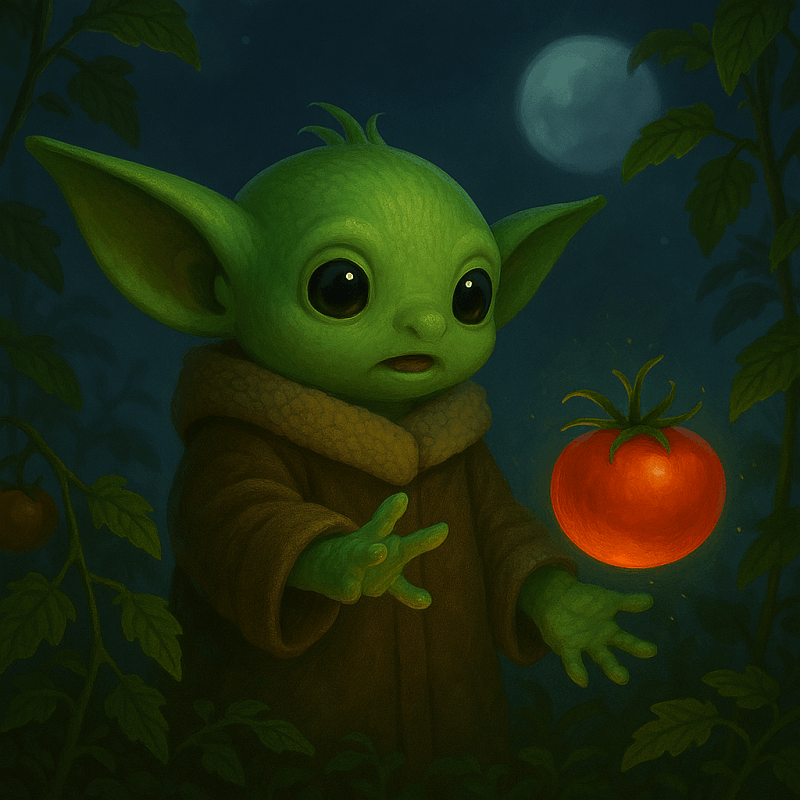
“Fear is the path to the dark side.” — Yoda
And Finally — One Last Point
It preserves flavour diversity, such a bonus for all you people out there that like to pack their gardens into jars.
The best-tasting tomatoes in the world are:
- Open-pollinated
- Often heirlooms
- Selected over generations for flavour, not shipping or shelf life
Hybrid tomatoes often sacrifice flavour for appearance and transportability. OP varieties carry the taste of the place.
So, it’s up to you now. Are you going to take advantage of tomato hybrid vigour and grow an F1 variety? Or will you stick with an old-fashioned, stable version of an open-pollinated tomato?
Just stay away from the genetically modified ones that glow, okay?
If tomatoes were meant to do that, they’d have been born that way. Hahahahaha.Go find yourself some catalogues, grab a coffee and get crazy.
Or hit up that friend of yours who’s always got spare seed and has dug up all their lawn for the glory of backyard tomato growing quests — legends.“He aroha nō te whenua, he oranga mō te tangata.”
From love of the land comes the well-being of the people.
© 2025 Tomato Love | Epic Tomato Source for heirloom seeds and seedlings grown in Hokianga. Cultivated with love, history, and mana.
“He iti, he pounamu.”




